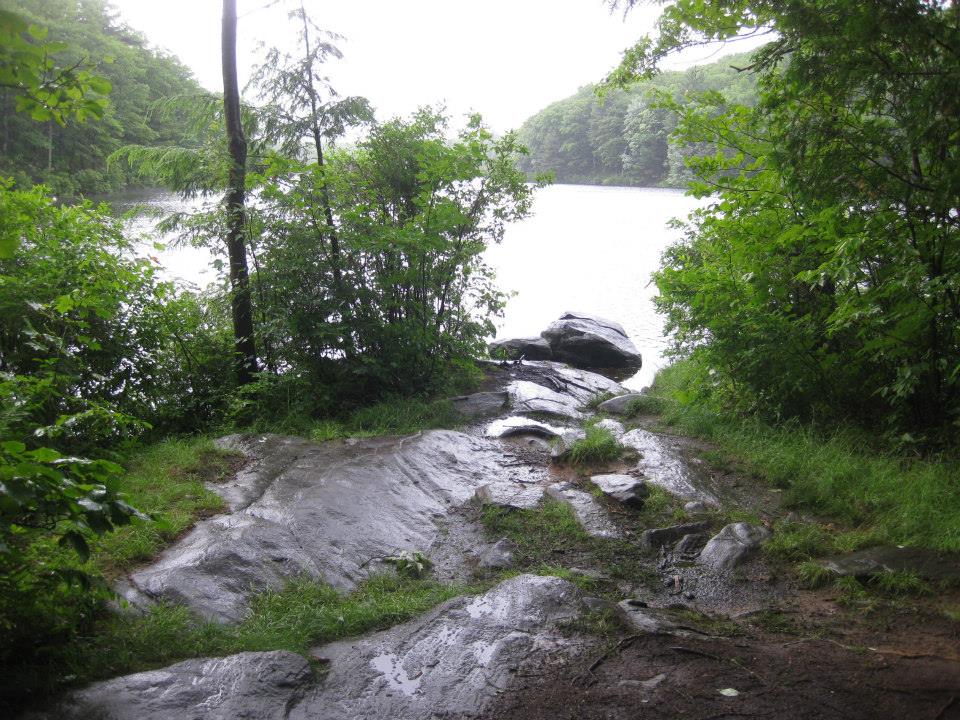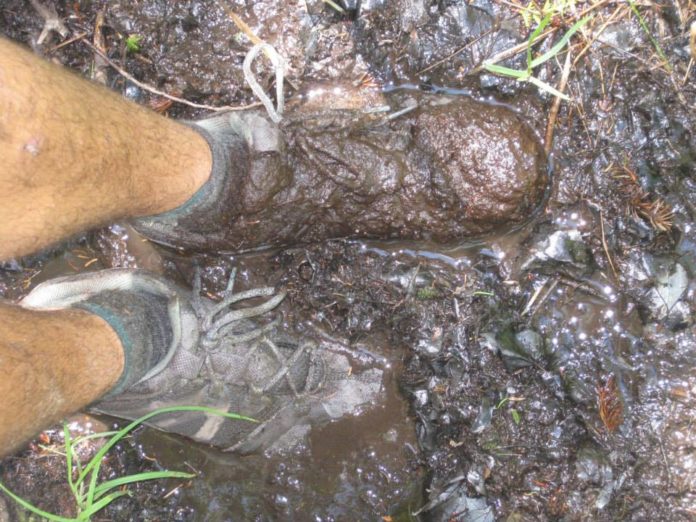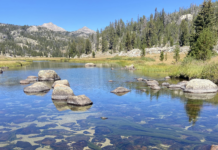The Appalachian Trail was wet, covered in mud and writhing insects. I had just reached the state of Connecticut, about two thirds of the way through the 2,200-mile trail. Summer temperatures were consistently warm, causing constant perspiration. It was like you could wipe the humidity from your face.
After nearly three months in the wilderness, it was only the second time I was entirely alone. And the loneliness terrified me. Surely, I’d get eaten by a bear if left to my own devices. My mind has the tendency to wander into worse-case scenarios when left unbridled. While I slogged through the rain, I imagined everything that could go wrong. Hitch-hiking by myself was, admittedly, my least favorite activity. Humans are always more dangerous than any kind of wildlife you might encounter.
My recent hiking partner had just gotten off trail for good because she discovered that the sharp foot pain she was experiencing was actually related to stress fractures. After we cried for a while in the local Inn, we picked ourselves up off of the ground and looked towards our next steps. She would take a train home, leaving the Appalachian Trail. And I needed to figure out how to be by myself in the wilderness.
I felt like a toddler again. When I set foot on the Appalachian Trail, I was expecting to be alone. I thought that walking across the country would be a solitary endeavor. So, when I stumbled upon my Trail Family a few nights into my journey, I wasn’t expecting to share 1,000 miles with them.
As my friend and I waved goodbye, clouds gathered above us. It seemed as though I had to build towers out of pain before I could leave the darkness behind. And now, with just 700 miles between myself and the end of my journey, I was finally alone.
Alone on the Appalachian Trail
As I walked into the uncertainty of my experience, the repetitive motion started to wear on my body. I kept thinking that the only way to get out of my own misery was to force myself to travel through it. And so I picked up my pace. Instead of hiking 20 miles per day, I began pushing my body as far as it would take me each day. I have a competitive streak, and I wanted to pass one of my previous hiking partners on my way to Maine. By my calculations, if I hiked 35 miles per day, it would only take me a week to pass him.

The pace, itself, wasn’t what wore me down. It was the rain. There were days of consistent downpours, raging rivers and scattered puddles as far as the eye could see. Rain seeps into your shoes, your socks, and your mind. Each pellet drives you a little closer to madness when you can’t escape it. But the worst part is that it softens your skin.
Assessing the Damage
A few days after I left my friend behind, the sun peeked through the purple sky. The pain from constant walking was worsening and I wanted to see if there was a way to provide some relief. I decided to assess the damage. So, I took a seat on a small rock and peeled the shoes from my feet.
At this point during my journey, I was no stranger to blisters. My hiker friends often gawked at my evening ritual, observing me while I emptied the pus from my feet. But a recent change in shoes nearly brought me to tears with every step. This was a lot of pain, even for me.
Beneath the layers of duct tape, my feet were covered in open sores. My knuckles were crimson-colored and trying to form scabs. In an effort to escape my own thoughts, I was ignoring the screams of my body. Paired with a rigid new pair of shoes and softened skin, I was reaching new heights of agony. When your feet have no skin, duct tape is the next best thing. I thought to myself.
I remember sliding my wet shoes and socks over a fresh layer of duct tape. There were a handful of day-hikers enjoying the nearby view while I nursed my wounds. But the experience was solitary. I was so determined to walk quickly through my discomfort, that I was destroying myself. But, perhaps the most shocking observation was related to the pain, itself.
As I stood up and willed myself to move forward, I realized that accepting the pain lessens the intensity of it. Once you embrace the fact that you’re going to hurt, it seems to hurt a little less. And if you stop fighting what you can’t change, it becomes easier to handle the discomfort.
For More Inspiration:















